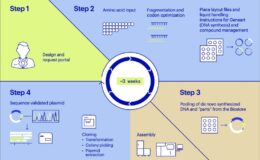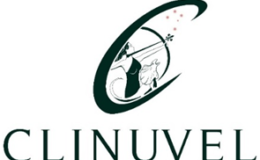
She and other young faculty decided to harness these new genetic engineering tools to do for livestock what other researchers and companies were doing for crops—giving animals and the foods they produced new traits. They embarked on experiments in cattle and goats to make their milk more nutritious. But then their work hit a snag. The FDA decided that introducing foreign DNA into animals qualified them as veterinary drugs, creating a lengthy and costly approval process that dissuaded many scientists. Funding for transgenic livestock research foundered. And people like Van Eenennaam scraped by on the few remaining grants.
Then came the gene-editing revolution. Tools like TALENS and Crispr, which allow scientists to alter animals’ genomes without adding foreign DNA, reignited livestock researchers’ imaginations and spurred a new crop of companies, including Recombinetics. Its engineers wanted to introduce DNA from hornless, non-dairy cattle breeds into their milk-and-cheese producing cousins. The company sought out Van Eenennaam to help house and study its creations. In 2015, Buri and Spotigy moved to UC Davis.
A year and a half later, Buri’s sperm was used to artificially inseminate ten horned Hereford dams in the Davis herd. When Van Eenennaam got word that six pregnancies had been confirmed, she sent in an application to the USDA Biotechnology Risk Assessment Grant program. Its mission is to fund projects that help federal agencies evaluate emerging technologies. Van Eenennaam was cautiously optimistic that by collecting reams of data on the calves, her team might help make a case for gene-edited animals to be regulated differently than transgenic ones.
Those hopes didn’t last the month.
On January 19, 2017 the FDA issued a set of draft guidelines, lumping gene editing together with older GMO technologies. The USDA, which oversees gene editing in plants, has decided, in most cases, to not regulate the technology, treating it as a sped-up version of traditional breeding methods. But the FDA reached a different conclusion, that the editing process presents unique risks. What if Crispr or TALENS make changes they’re not supposed to make? What if those mistakes result in unexpected mutations? And what if those genetic changes spread from livestock to their wild relations?
“We were right in the middle of doing our experiments and it caught us off guard,” says Van Eenennaam, who has not been shy about criticizing the FDA’s decision. “We had predicated everything on assuming those animals could go into the food supply.”
If the calves—five males and one female—were considered GMOs, they couldn’t be butchered and sold off through the University’s Meat Lab. For Van Eenennaam, that was key to making the economics of her research work out. Instead, each 2,000 pound animal would have to be incinerated, at a cost of 60 cents per pound. So Van Eenennaam petitioned the FDA for an exemption.
In December 2018, she sent the agency a detailed dossier on the calves—disclosing the results of their physical exams, blood tests, and DNA sequencing. Based on her team’s analyses, nothing looked amiss. The animals appeared healthy, their genomes precisely edited, their furry foreheads completely horn-free. While Van Eenennaam waited for the agency to make its decision, she and her colleagues wrote up their results, and in February submitted them to Nature Biotechnology.
While the UC Davis team typed up their manuscript, scientists at the FDA were combing through the data too. One of them was Alexis Norris, a biostatistician in a division of the Center for Veterinary Medicine. When she joined the agency in July 2018, she hadn’t had much experience with the genomes of cows and pigs and other barnyard species. But she’d gotten really good at analyzing massive amounts of sequence data as part of her graduate and post-graduate work at Johns Hopkins, on the genetic underpinnings of human diseases. At the FDA, she was putting those skills to use screening livestock DNA data for unintended edits.














